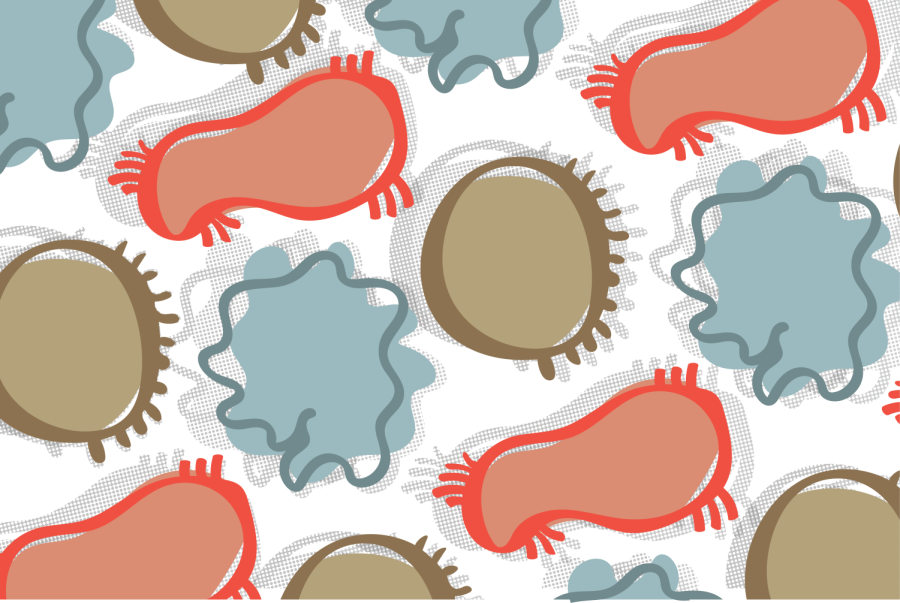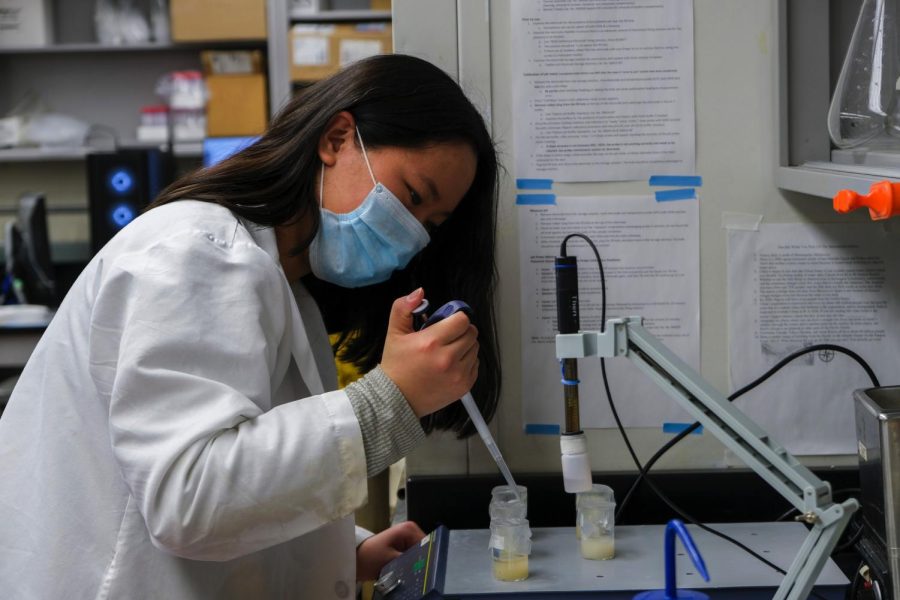Using the University of Minnesota Insect Collection, a team of bee researchers at the Minnesota Department of Natural Resources (DNR) is tracking and studying native bees in the hope of understanding how the insects have been impacted by the climate crisis.
Because researchers do not have a comprehensive list of which bees are native to Minnesota, they do not know much about these insects.
By collecting and studying native bees, future research will examine deeper questions about migration patterns and changes to bee habitats, said Robin Thomson, the University’s Insect Collection curator. Through this, the Minnesota DNR has been able to put together a historical picture of which bees have lived in the state and when, she said.
This research will also help scientists predict what bee species they would expect to find today, Thomson said.
“There are some species that maybe have shifted ranges. They’re being found in different counties, which might correlate to changes in land use for agricultural reasons,” she said.
Some bee species that the DNR has found in the past are no longer popping up in their recent surveys.
“There’s a question of where did they go? And why did they move?” Thomson said.
Nicole Gerjets, the bee survey specialist for the DNR’s Minnesota Biological Survey, has been leading a survey of native bees since 2017. Part of this project, which has continued in the pandemic, is creating a baseline survey documenting what bees are present around the state.
Gerjets and her team have already covered the western and northeastern areas of Minnesota, with next year being their last field sweep through the state. The project is anticipated to finish in 2023 and is funded by the Minnesota Environment and Natural Resources Trust Fund, as recommended by the Legislative-Citizen Commission on Minnesota Resources.
The commission makes funding recommendations to the Minnesota legislature for environmental and natural resource projects.
The survey work includes physically capturing bees in the spring and summer, sorting through and identifying the bees, then pinning and labeling each one. The information is then entered into a database, and the bees are stored at the University’s Insect Collection.

So far, the team has collected around 45,000 specimens, tens of thousands of which have been donated to the University Insect Collection, Gerjets said. The University collection has over 65,000 bees in storage, both native and nonnative to Minnesota.
“We can’t know what we need to conserve unless we know what we have,” said Jessica Petersen, a research scientist at the DNR who also is involved with the Minnesota Biological Survey. “Bees are incredibly diverse. So, it’s really important to be able to look into what bees we have here in the state … and be able to see what makes them so diverse.”
With around 450 bee species in Minnesota, she said there are many questions that need answers, such as the long-term impact of the climate crisis on bees.
Typically, surveyed bees are thrown away after they are catalogued, Petersen said. But once the data is collected, these bees will be transferred to the University’s collection, where they will be available to anyone who needs them.
“We hear about pollinator decline in the popular press, but we don’t have any numbers to put to that,” she said. “A lot of the initial pollinator decline interest and worry was with respect to honeybees, which are not native, and it’s just one species.”
Because native bees are different biologically and ecologically from honeybees, Petersen said they are likely being impacted by environmental change in different ways. Without knowing what bees are out there, they will not know the effects.
“People talk about pollinator habitat and pollinator decline as if it’s one species, and it’s really 450,” she said. “If we don’t ask questions about how they’re interacting with the environment, we can’t know how to help save them either.”






















praiseinterracialmarriages
Dec 1, 2020 at 2:26 pm
Great article. A Bayer chemical product called Roundup is used on crops all over the world which has the effect of killing both damaging insects as well as helpful pollinators like bees. Bayer was the company which brought us Zyklon B, the drug used to kill 1.1 million people during the Holocaust during World War Two.
People have sought to stop the use of Roundup, the Bayer product used in farms and orchards, and by people tending to their gardens and lawns. This has created a major legal war for environmentalists and the Bayer Company/Bayer AG (U.S./Germany).
Bloomberg News, owned by former 2020 presidential election candidate Michael Bloomberg, share a story in 2017 about an engineer in Japan who developed cyborg pollinators to replace bees and other pollinators around the world. These cyborg insects are programmed to spread out over crops and touch them with a filament used to collect pollen from corn/maize and other fruits and vegetables. It is a great idea from the appearance of it, but the impact of using Roundup and other chemicals which kill a wide variety of damaging insects as well as helpful natural pollinators will be felt in the animal world. Insects, whether you like them or not, are food for fish, birds, and mammals. With diminishing numbers of insects killed by chemical irritants, the food chain and the environment will be harshly affected. Diets will be interrupted, causing either a loss of additional species or an adaptation by animals of all kinds to find other sources of nourishment.
I have contacted University of Minnesota President Joan Campbell and University of Minnesota General Counsel (the University’s senior lawyer), Douglas R. Peterson (my dad is retired attorney Douglas J. Peterson, a University of Minnesota Class of 1968 law school grad) to share my concern. One of the ideas I have is to get entomologists (those who study insects), biological scientists and chemists to work on pesticides which attack specific DNAs, but not those of important pollinators. I am not a chemist or a biological scientist (I studied history and international affairs with CLA’s Class of 1996), but I have had friends and neighbors with those interests, and I have been moved by their brilliance and commitment to science.
While cyborg pollinators are an ingenious idea, which I read about in Bloomberg News, They will help, but keeping our pollinators healthy and alive should be a priority by Bayer, University of Minnesota (which works to support major agricultural enterprises like Cargill Corporation (a food sector business which operates in 125 countries across six regions of the world, employing 160,000 people worldwide).
(For more information about Cargill Corporation, see Wikipedia and https://www.investopedia.com/articles/company-insights/090216/top-5-companies-owned cargill.asp#:~:text=Cargill%20is%20one%20of%20the%20largest%20private%20companies,and%20operates%20in%20more%20than%20125%20different%20).
There are also books written about Cargill, and one may find information about the Company by contacting Cargill Corporation at http://www.cargill.com, contact us, for information about products and employment at Cargill.
Cargill Corporation is a Minneapolis/Wayzata, MN-based company which is privately owned and operated by one of the wealthiest families in the United States. Dinnaken House and Tairrie House — which are apartments on campus, now owned by University of Minnesota, were founded and owned by the late Jim Cargill, a kind man who took an interest in his tenants, and who officed on the property until his retirement. Jim was on the board of directors of Cargill Corporation and served as a vice president of the company, working his way up in the company after his military service during World War Two. The Company has a varied history in its ethical behavior, but serves the needs of the world, and its service has brought the U.S. and the former Soviet Union/Russia closer together.
Cargill may have an interest in both the use of cyborg pollinators, as well as ongoing use of natural pollinators. Crops are important to Cargill, who likely use Roundup, which is currently one of the top sellers in the world of pesticides, and they may see an importance in cooperating with the development of a DNA focused pesticide which leaves bees alone.